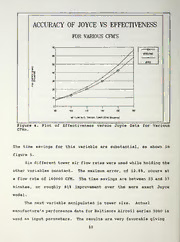
Employing an effectiveness model for calculating cooling tower performance. PDF
Preview Employing an effectiveness model for calculating cooling tower performance.
EMPLOYING AN EFFECTIVENESS MODEL FOR CALCULATING COOLING TOWER PERFORMANCE JOHN D. RICE FALL QUARTER 1991 K&55 TABLE OF CONTENTS Page LIST OF FIGURES iii LIST OF ABBREVIATIONS iv SUMMARY vi INTRODUCTION 1 DEVELOPMENT OF EFFECTIVENESS COMPUTER MODEL 2 CONCLUSIONS 8 BIBLIOGRAPHY 16 APPENDIX A EFFECTIVENESS COMPUTER PROGRAM 17 APPENDIX B DATA GENERATED FROM WEBER MODEL 39 COMPARISON APPENDIX C DATA GENERATED FROM JOYCE MODEL 41 COMPARISON 11 LIST OF FIGURES Page Figure 1. Schematic of a Counterflow Cooling Tower 2 Figure 2 Saturation Air Enthalpy versus Temperature 5 . Figure 3 Accuracy of Weber versus Effectiveness Model 8 . Figure 4. Plot Effectiveness vs Joyce, Various CFMs 10 Figure 5. Time Savings at Various CFMs 11 Figure 6. Plot Effectiveness vs Joyce, Various Tower Sizes 12 Figure 7 Time Savings at Various Tower Sizes 13 . Figure 8. Plot Effectiveness vs Joyce, Various Pump Sizes 14 Figure 9. Time Savings at Various Pump Sizes 15 in T254185 LIST OF ABBREVIATIONS Ay - surface area of water droplets per volume of cooling tower C - constant pressure specific heat of moist air pil C - constant pressure specific heat of liquid water pw C, - derivative of saturation air enthalpy with respect to temperature h, - enthalpy of moist air per mass of dry air h - convection heat transfer coefficient c h - diffusion mass transfer coefficient D h - enthalpy of water above reference state for liquid water g at T ref h - enthalpy of saturated air s ir^ - mass flow rate of water m - mass flow rate of air a m* - ratio of air flow rate to water effective capacitance rate for effectiveness analysis Le - Lewis number Ntu - overall number of transfer units Q - actual heat transfer rate T - reference temperature for zero enthalpy of liquid water ref (32 °F) T - water temperature w V - volume e, - air-side heat transfer effectiveness w, - air humidity ratio w - humidity ratio of saturated air s IV Additional Subscripts a - air stream conditions i - inlet state conditions o - outlet state conditions T - total w - water stream conditions SUMMARY Optimization of the design of chiller/cooling tower systems for large office buildings require an accurate detailed model for the cooling tower. This model must be precise and allow for varying air and water flow rates, ambient air conditions and entering water temperatures. The optimization computational requirement is very time consuming, however, due to the tower model requiring solution of three simultaneous differential equations. The purpose of this project was to develop a computer program utilizing an effectiveness model to reduce computational time while maintaining good correlation to existing programs. The methodology involved the use of a tower model program developed by Eric Weber [1988] and the modifications made unto by Thane Joyce [1990] that integrated a centrifugal chiller model, cooling tower model, and system optimization strategy. The effectiveness model generated by James Braun [1988] was utilized in place of Weber's tower model. The results are very encouraging. The computational time required to optimize the design was reduce approximately 75% while maintaining an accuracy of tower water temperature range of approximately 15%. This reduction in computer time will allow an engineer the flexibility to examine many systems and determine the optimum design in a shorter time frame. VI
